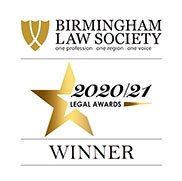
We all know what a house is – or at least we think we do. However, the question of what constitutes a house has been an active issue among lawyers for years, especially since the introduction of 'right to buy' legislation enabling residential tenants to buy the freeholds of their properties.
A recent case gives further guidance on this vexatious question. A company which held a lease in respect of a mews house sought a declaration under the Leasehold Reform Act 1967 that it was entitled to acquire the property's freehold. That application was resisted by the landlord on the basis that the property was excluded from being a 'house' by Section 2(2) of the Act. The tenant's arguments, however, succeeded before a judge.
The landlord challenged that decision, citing in evidence that the two-storey property was not detached, either to the sides or to the rear. A particular facet of the argument was to do with the rear wall of the property, which was below a part of a structure that was not itself part of the property.
In rejecting the appeal, however, the High Court considered that the issue of the wall was trivial and did not exclude the property from enfranchisement. The Court found that to allow the legal division of a party wall to disqualify the property from enfranchisement would be inconsistent with the purposes of the Act. Such a ruling would be likely to deprive many leaseholders of a right which Parliament had intended to confer upon them.
 |
 |
 |
 |
 |
 |
|




